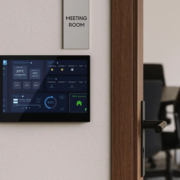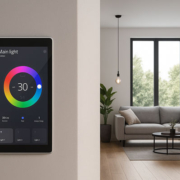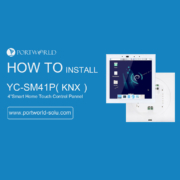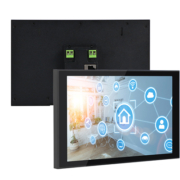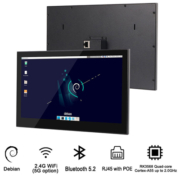What Are the Benefits of Using a Smart Home Control Panel Instead of a Traditional Smart Home Hub?
When building a smart home ecosystem, users often face a choice between two types of control solutions: the traditional smart home hub and the modern smart home control panel. With the evolution of embedded hardware and user interface technologies, control panels are rapidly becoming the preferred option in both residential and commercial environments.
So what makes smart home control panels superior to traditional hubs? Let’s explore their key benefits and how they are reshaping the future of intelligent living.
What Is a Traditional Smart Home Hub?
A traditional smart home hub is a compact device that connects and manages multiple smart devices—such as lights, door locks, sensors, and thermostats—using communication protocols like Zigbee, Z-Wave, or Wi-Fi. While it centralizes device control and automation, interaction is typically limited to smartphone apps or voice commands, with no built-in visual interface.
What Is a Smart Home Control Panel?
A smart home control panel is an all-in-one touch-enabled device, usually wall-mounted, that integrates display, processing, and communication capabilities. Powered by systems like Android or Linux, it combines the functionality of a hub with a sleek touchscreen interface, offering direct, real-time control of your smart devices. These panels are increasingly used in homes, apartments, hotels, offices, and building automation projects.
5 Key Benefits of Smart Home Control Panels
1. Intuitive On-Device Interaction
Unlike traditional hubs, control panels offer a graphical, touch-based interface that allows users to control lights, scenes, curtains, and security systems without relying solely on phones or voice assistants. It brings smart home control to your fingertips—literally.
2. Multiple Communication Protocols in One
Modern control panels support a wide range of protocols—RS485, Modbus, Zigbee, Wi-Fi, Bluetooth, Ethernet (RJ45), and even PoE—enabling them to act as both a hub and a centralized controller, reducing system complexity.
3. Local Automation + Remote Access
Smart panels run on embedded operating systems with local logic processing. That means your home automation can continue working even without internet access. With companion apps or cloud integration, users can also manage everything remotely.
4. High Customizability and Expandability
Smart panels support flexible UI design, application development, and hardware add-ons (like cameras, NFC, motion sensors, or voice control), making them suitable for tailored automation scenarios in smart homes, hotels, and commercial spaces.
5. Aesthetic Integration & Modern Appeal
Unlike traditional hubs that are hidden away, smart panels are designed to be part of your home’s visual environment. With sleek industrial design and flush wall mounting, they add a modern, tech-savvy look to any space.
Portworld’s Smart Panel Solutions
As a professional smart control solution provider, Portworld offers a series of embedded smart panels designed for seamless smart home management and ready for OEM/ODM customization. Our panels replace traditional hubs with a more powerful, user-centric experience.
Recommended Product:
YC-SM08M – 8-Inch Smart Home Control Panel
- OS: Android 11 (customizable Linux version available)
- Processor: RK3566 Quad-Core Cortex-A55
- Display: 8″ IPS capacitive multi-touch screen
- Connectivity: PoE, RJ45 Ethernet, RS485, Wi-Fi, Bluetooth
- Applications: Lighting, HVAC, access control, curtain systems, smart hotels, smart offices
Portworld provides full-stack development services—BSP/SDK customization, UI design, PCBA-level hardware adjustments—helping partners launch their own branded smart panel solutions quickly and efficiently.


